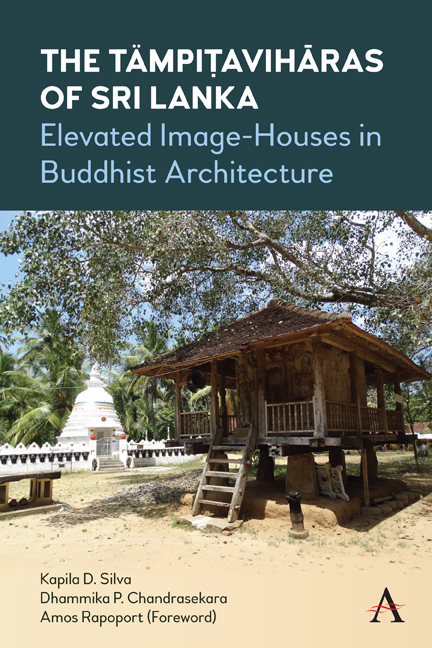Introduction
Published online by Cambridge University Press: 16 December 2021
Summary
Buddhism has been a source of inspiration in creating unique architectural traditions and a range of illustrious monuments over its 2,600 years of history. One such architectural tradition – erecting shrines to preserve the statuaries of the Buddha – is an excellent representation of the worldview of Buddhists, their respect for the Master, and how the teachings of the Buddha have evolved into different traditions in different contexts, times, locales, and societies. Besides being manifestations of the intellectual and spiritual life of Buddhist societies, these Buddha image-houses are also a rich source for understanding other cultural dimensions, such as the socio-economic conditions of Buddhist societies and people's interaction with the environment.
This book primarily focuses on one distinctive Buddhist architectural practice from late-medieval Sri Lanka – the construction of Buddha image-houses on elevated wooden platforms supported by stone pillars, popularly called ṭämpiṭavihāras. As a centre of Buddhism, Sri Lanka has a rich tradition of erecting Buddha image-houses, the origin of which dates to the fifth century. Yet, the ṭämpiṭavihāra tradition existed only from the sixteenth to the nineteenth centuries in Sri Lankan history, which is generally termed the Kandyan Period. In the course of its historical development, the Buddha image-house has shown a multitude of design forms, and out of this design variety, the ṭämpiṭavihāra is unique mainly due to its constructional techniques and specific architectural characteristics. The term ṭämpiṭa means ‘elevated on pillars’ (ṭäm usually mean stone pillars) and vihāragē or vihāra denotes the image-house. While an image-house is generally called paṭimāghara, bimbālaya, piḷimagē, vihārage, or budugē, the term ṭämpiṭavihāra is particularly used to distinguish it from all other image-house forms, referring to its distinctive constructional features. A synonym occasionally used for ṭämpiṭavihāra – däva-mata vihāra or däva-piṭa vihāra (temple on a wooden platform) – also emphasizes its characteristic elevated construction.
The ṭämpiṭavihāra is a unique type of imagehouse – unique, not only for its specific time frame and distinctive construction technology, but also for its complex architectural conception of the Buddhist worldview and soteriology. Although its architectural symbolism might be a continuation of the imagehouse tradition of the early classical era of Sri Lankan history, the ṭämpiṭavihāra is remarkable in two ways.
- Type
- Chapter
- Information
- The Tämpitaviharas of Sri LankaElevated Image-Houses in Buddhist Architecture, pp. 1 - 4Publisher: Anthem PressPrint publication year: 2021

